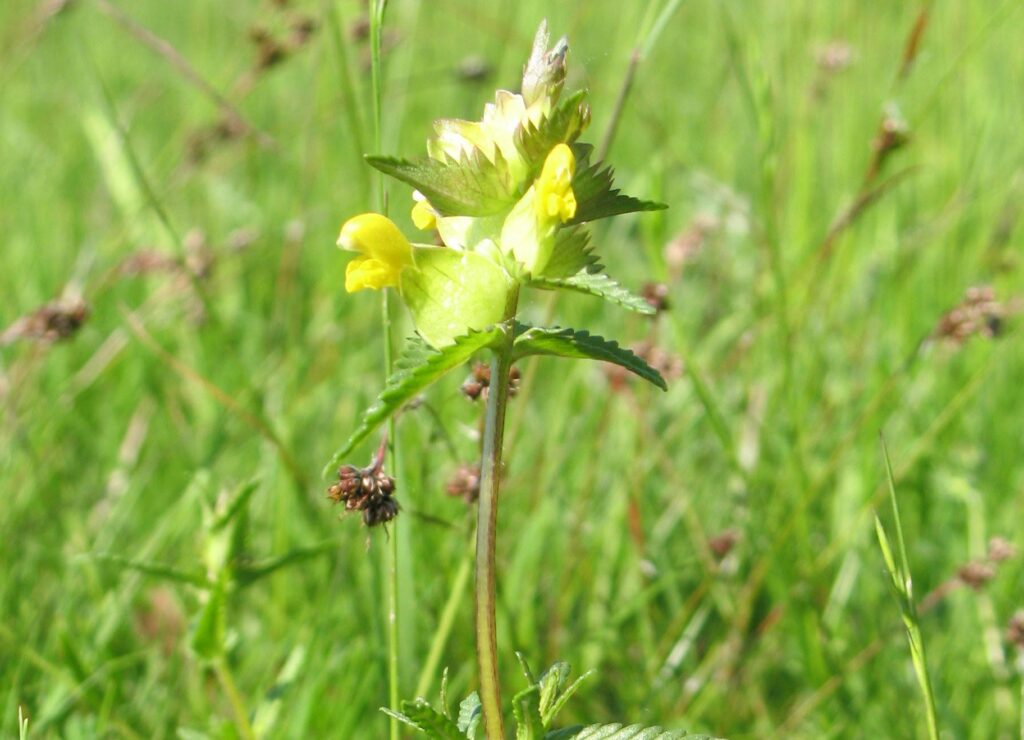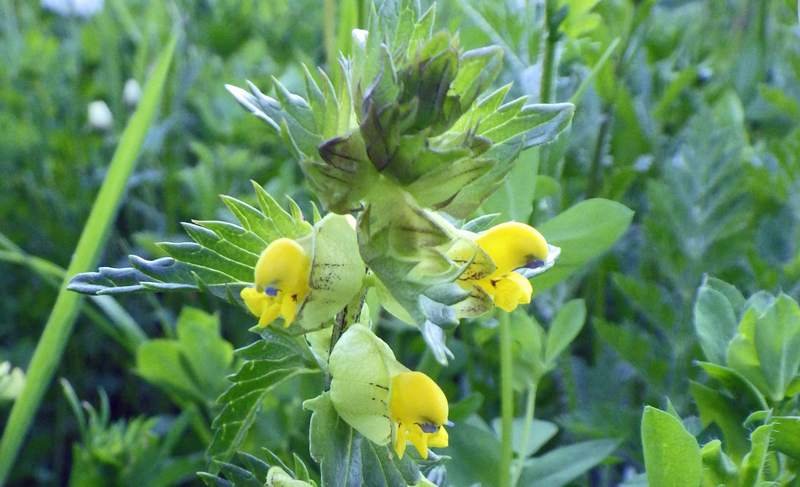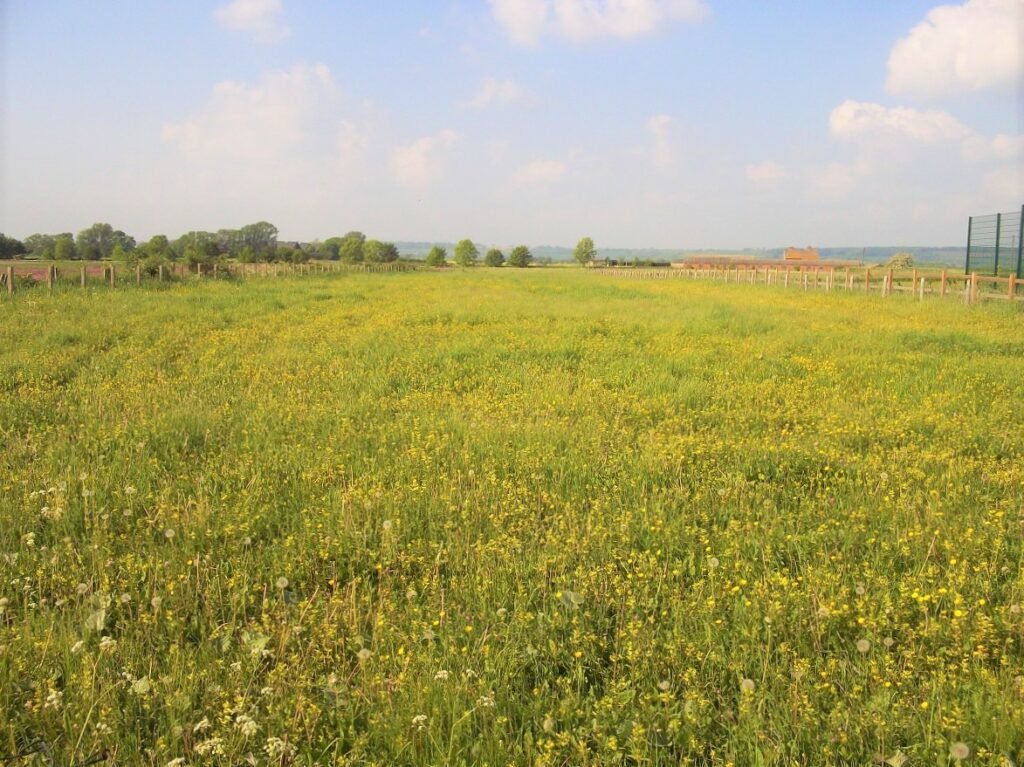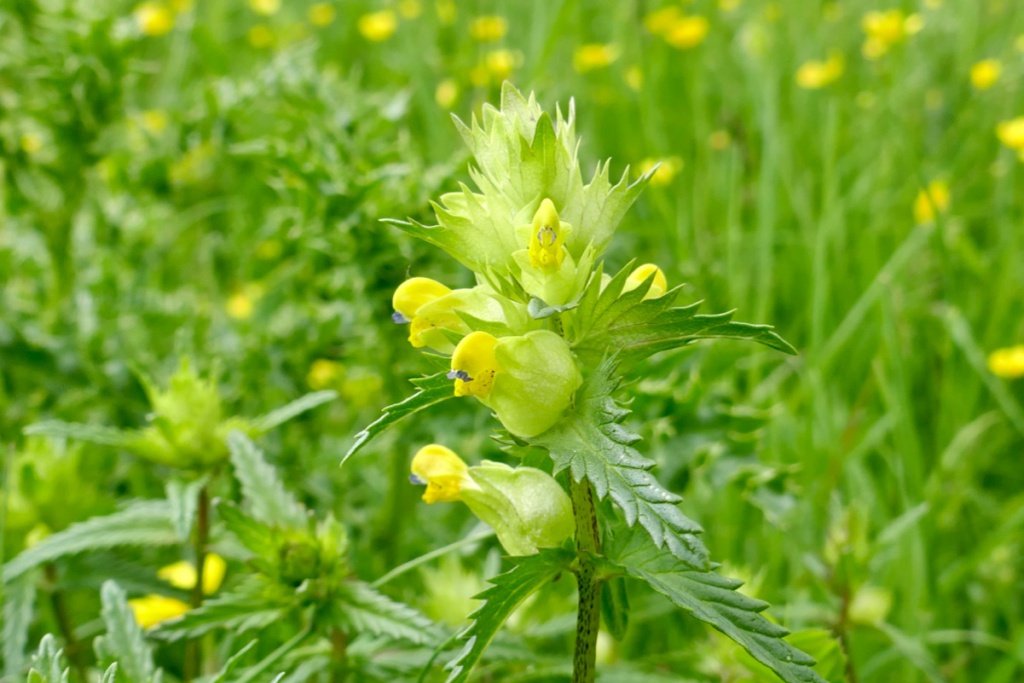Yellow Rattle (Rhinanthus) is an enigmatic wildflower that brings a touch of golden beauty to wildflower meadows and grasslands across the British Isles. This fascinating plant not only brightens up the landscape with its vibrant yellow flowers, but it also plays a unique role in the ecosystem, acting as a partial parasite to its grassy neighbours. In this article, we will delve into the world of Yellow Rattle, exploring its life cycle, how it grows, and its intriguing relationship with nearby plants.
Plant Ecology and Habitat
Yellow Rattle is an annual plant, meaning it completes its life cycle within a single year. It is a bushy plant, typically growing in grassy habitats such as meadows, fields, and coastal grasslands. Preferring low-lying fields and dry, well-drained soils, this plant thrives in a wide range of environments.

Flowering and Seed Production
From late spring to late summer, Yellow Rattle produces clusters of hooded flowers atop airy stems, adding a golden hue to the grassland. The plant’s nettle-like green leaves provide a striking contrast to the vibrant yellow flowers. The flowers eventually give way to inflated seed pods, which give the plant its common name: when shaken, the pods produce a rattling sound, reminiscent of a baby’s rattle.
In the height of summer, the seed capsules ripen and split open, releasing a bounty of seeds. A single Yellow Rattle plant can produce a staggering number of seeds, ensuring the survival and spread of this unique species. The seeds can be harvested by hand, providing a sustainable and natural way to create a seed bank for future wildflower meadow creation and enhancement.
Yellow Rattle Seed and Growth
Yellow Rattle seeds require a period of cold stratification to germinate, meaning they need to be exposed to cold temperatures for a couple of months before they will sprout. This process can be achieved naturally by sowing the seeds on the soil surface in autumn, allowing the winter chill to do its work. Come spring, the seeds will germinate, and the plants will burst into life, growing rapidly throughout the warmer months.
When planting Yellow Rattle, it is essential to sow a proportion of seed that is suitable for the size of your meadow or garden. A rattle seed advice sheet can be a helpful resource to determine the correct amount of seed for your specific needs.

The Secret Life of Yellow Rattle: A Partial Parasite
What sets Yellow Rattle apart from other wildflower species is its unique relationship with nearby plants, particularly grasses. Yellow Rattle is a semi-parasitic plant, meaning it obtains some of its energy for plant growth by tapping into the root systems of its neighbours.
This parasitic behaviour has a notable impact on the growth of grass in the surrounding area. As Yellow Rattle siphons off nourishment from grass roots, the vigour of the grass is reduced, allowing other wildflower species to flourish. This results in a diverse and thriving wildflower meadow, rich in colour and life.
The Rhinanthus species’ impact on grass growth is particularly beneficial for the establishment and maintenance of meadows. By suppressing vigorous grasses, Yellow Rattle creates space for a wide range of wildflower seeds to germinate and grow, adding variety and interest to the landscape.
Late-Blooming Plants and the Role of Yellow Rattle
In addition to its parasitic behaviour, Yellow Rattle also provides support for late-blooming plants in the meadow ecosystem. By suppressing grass growth, it allows more sunlight to reach the soil surface, creating the ideal environment for other flowers to thrive.
Yellow Rattle in Meadows and Gardens
Yellow Rattle can be a valuable addition to any wildflower meadow or garden. By sowing a proportion of flowers and seeds in a suitable area, you can create a vibrant and dynamic environment that supports a diverse range of plants and wildlife. When incorporating Yellow Rattle into a garden, it is essential to plant it amongst grasses, as its parasitic nature relies on this interaction for growth.

Conservation and Importance
The role of Yellow Rattle in promoting biodiversity in meadows and grasslands cannot be understated. Its ability to suppress grass growth and create space for a range of wildflower species makes it an essential component of any thriving wildflower meadow. As wildflower-rich habitats become increasingly rare, the preservation and cultivation of Yellow Rattle become even more critical.
Furthermore, Yellow Rattle’s unique characteristics also offer benefits to pollinators such as bees and butterflies. The golden flowers provide a valuable source of nectar during the summer months, while the plant’s ability to create space for other wildflowers ensures a continuous supply of food for these vital insects.
Benefits To Birds
Yellow Rattle also plays a significant role in supporting avian species, contributing to the overall ecological balance of wildflower meadows and grasslands. Various bird species, including finches and sparrows, are known to consume the seeds of Yellow Rattle. As these birds feed on the plant’s seeds, they aid in seed dispersal, effectively transporting the seeds to new areas and contributing to the plant’s propagation and colonisation.
Furthermore, the presence of Yellow Rattle in wildflower meadows and grasslands creates a diverse and rich ecosystem that attracts a variety of insects. The vibrant yellow flowers of Yellow Rattle serve as a magnet for insects, including beetles and grasshoppers, which find shelter, food, and breeding opportunities within the plant’s vicinity. In turn, these insects become an abundant and accessible food source for insectivorous birds that frequent the meadows.
Bird species such as swallows, flycatchers, and warblers rely heavily on the abundance of insects to sustain their energy needs and successfully raise their young. The availability of a thriving insect population facilitated by the presence of Yellow Rattle supports these avian species throughout their life cycles, ensuring their survival and contributing to the overall biodiversity and ecological balance of the habitat.
By fostering the growth of Yellow Rattle in wildflower meadows and grasslands, we not only enhance the visual beauty of the landscape but also create supplementary resources that support avian populations. This harmonious relationship between Yellow Rattle, birds, and insects fosters a diverse and thriving ecosystem, where each species plays a vital role in maintaining the ecological balance.
Please note that while the information provided is based on general knowledge about the ecological interactions between plants, insects, and birds, specific bird species and their interactions with Yellow Rattle may vary. Local research and observations can provide more accurate and detailed insights into the specific relationships between Yellow Rattle and bird populations in the British Isles.
Historical Uses and Folklore
The history of Yellow Rattle is rich in folklore and tradition. Some common names for the plant include ‘Rattlebag’, ‘Rattlebox’, and ‘Rattlesnake Grass’, alluding to the distinctive rattling sound made by its ripe seed pods. It is also known as ‘Cockscomb’ due to the shape of its flowers, which resemble a rooster’s comb.
In folk medicine, Yellow Rattle was believed to have the power to cure dimness of sight. While the validity of this claim is uncertain, it highlights the long-standing interest in this captivating plant.

Yellow Rattle FAQ’s
What is Yellow Rattle good for?
Yellow Rattle is beneficial for creating and maintaining diverse wildflower meadows. Its semi-parasitic nature helps suppress vigorous grasses, allowing other wildflowers to flourish. Additionally, its nectar-rich flowers provide sustenance for pollinators such as bees and butterflies.
Does Yellow Rattle come back every year?
Yellow Rattle is an annual plant, meaning it completes its life cycle within a single year. However, it produces a large number of seeds, which can germinate and grow new plants the following year, effectively allowing it to “come back” each year through its seeds.
Is Yellow Rattle invasive in the UK?
Yellow Rattle is native to the UK and is not considered invasive. Instead, it plays an essential role in promoting biodiversity in meadows and grasslands, making it a valuable addition to these habitats.
When should I plant Yellow Rattle?
Yellow Rattle seeds should be sown in autumn, allowing them to undergo a period of cold stratification during the winter months. This exposure to cold temperatures is necessary for the seeds to germinate and grow in the spring.
How do I harvest Yellow Rattle seeds?
Yellow Rattle seeds can be harvested by hand when the seed capsules are ripe and dry, typically in late summer. Gently shake the seed capsules over a container to collect the seeds, which can then be stored or sown to create new wildflower meadows or enhance existing ones.
Can I grow Yellow Rattle in my garden?
Yes, Yellow Rattle can be grown in gardens, provided there is an area with grasses for it to parasitise. It is an excellent addition to a wildflower garden, as it promotes biodiversity and adds a splash of colour with its golden flowers.
How do I care for Yellow Rattle plants?
Yellow Rattle is a low-maintenance plant that requires little care once established. Ensure that the seeds are sown in well-drained soil with access to sunlight, and let nature take care of the rest. The plant will grow and thrive throughout the warmer months, adding beauty and interest to your meadow or garden.
Conclusion
Yellow Rattle is a truly unique wildflower with a fascinating life story. Its vibrant yellow flowers, parasitic relationship with grasses, and crucial role in promoting biodiversity make it an essential component of any wildflower meadow or garden. By understanding and cultivating Yellow Rattle, we can contribute to the conservation of these vital habitats, ensuring that they remain a haven for wildlife and a source of beauty and inspiration for generations to come.
Sam loves to learn about animals and their habitats. He has been a nature lover from a very young age, and has been writing papers and articles about wildlife for as long as he can remember.

I read the entire article. There was no mention of benefits to birds. Do birds eat the seeds? Do birds eat insects attracted to yellow rattle? The article did mention benefits to bees and butterflies but there was nothing regarding benefits to birds.
Hi Bob,
Thanks for your feedback. I have updated the article to include the benefits to birds 🙂
Kind Regards
I’ve been informed that yellow rattle can be parasitic (not sure what semi-parasitic means) to other wildflowers and that they shouldn’t be allowed to “get out of control”
Any thoughts?
Hello Peter,
Yellow rattle is indeed a semi-parasitic plant, also known as a hemiparasite. This means that while it can photosynthesize and produce its own food, it also relies on extracting some nutrients from the roots of neighbouring plants. Specifically, yellow rattle taps into the host plant’s root system to obtain water and minerals.
In the context of wildflower meadows or natural habitats, the concern about yellow rattle “getting out of control” typically arises because it can have a competitive advantage over other plant species due to its parasitic nature. By extracting nutrients from neighbouring plants, yellow rattle can weaken their growth and, in some cases, reduce their populations.
Overall, yellow rattle can be a valuable addition to wildflower habitats when used appropriately, but it’s important to carefully manage its presence to prevent it from becoming excessively dominant and negatively impacting the ecosystem.
Kind Regards